Decoding the Smart Investor’s Investment Cycle
In this chapter, you will learn. . .
- What the BRRRR investment strategy is
- The pros and cons of using this strategy
- Who should and should not use this strategy
Do you remember what I said at the outset of this guide about real estate investing? I mentioned that this is not a get-rich-quick scheme. There are no shortcuts to generating wealth in this industry. However, there are specific strategies that can help you get to your six-figure destination fast.
In this chapter, I’ll tell you about one of my all-time favorite strategies—the BRRRR. And no, that does not have anything to do with cold weather. This is the one strategy that has turned a lot of investors into millionaires, so if you’re wondering what strategy you should be using as a new investor, you better read through this chapter.
Let me tell you something personal. . .
Before I decided to become an investor (and before I ever heard about BRRRR), I thought real estate investments required huge startup capital. And I thought that if I did invest I would have to wait for a decade or even longer than that before I could enjoy the financial rewards. And for a time, that held me back from pursuing real estate.
But of course, I was wrong about my assumptions. And I’m glad I was.
What I’m going to teach you in this chapter is something that I wish I knew when I was younger. You see, while you can always do real estate investing the “classic way” (which is a nice term referring to an old method), you can opt to use a strategy that would allow you to invest in a better and more efficient way. That’s what a smart investor would do.
And that strategy is what we know as the BRRRR method. With this strategy, you can build your own real estate empire within just a few years. Just think of that!
Unfortunately, this highly effective method has been kept secret by many seasoned investors. But don’t worry! I’m not going to keep the details to myself. Once you learn this, you’ll realize why real estate is such a powerful system for generating wealth. And you’ll learn how you can jump into this industry even if you don’t have a lot of cash, to begin with.
But before I go into details, let’s first decode the acronym.
What is the BRRRR strategy?
BRRRR stands for Buy, Rehab, Rent, Refinance, and Repeat. These five letters make up what I refer to as the smart investor’s investment cycle. And as I’ve already mentioned, this is my all-time favorite strategy, and for good reason! It has changed countless lives for the better—mine included.
So let’s go ahead and discuss what this strategy is.

Buy
The first letter of the acronym BRRRR stands for ‘buy’. And as you’ve learned in the previous chapter of this guide, there are a lot of factors that you need to consider before deciding to buy or invest in a property.
That’s primarily because there’s a lot to lose if you make the wrong decision in this phase of the investment cycle. The wrong property can end up being a liability on your end rather than an asset as it should have been.
So how do you make sure that you maximize the chances of earning big time from your planned investment? You need to choose investment properties based on their potential to generate rental income. Now, this is not something you based on your gut feeling. You need to crunch numbers to correctly determine whether a property is worth investing in or not.
To analyze the earning potential of a property, you need to take the following factors into consideration:
- Cost of renovations
- Estimated rental expenses (monthly)
Deducting these expenses from your projected rental income will help you determine whether you can make a decent profit off the property or not. If the resulting profit margin meets your requirements, then you should proceed with making an offer for the property.
But this is where it can all get tricky. How would you know how much to offer for a property? The 70% rule of investing can help you.
According to that rule, the maximum price of a property should not exceed 70% of a property’s ARV (or, After Repair Value) less the total costs for repairs. In other words,
Maximum Price = (ARV x 70%) – Total Repair Costs
So for example, if a property’s value after all repairs are completed is $250,000 and the total cost of the repairs is $50,000, then the maximum price you should pay for this property is computed as follows:
Maximum Price = ($250,000 x 70%) – $50,000
= $175,000 – $50,000
Maximum Price = $125,000
What this means is, if you pay more than $125,000, you’ll run the risk of incurring a loss. So here’s a word of advice: Don’t forget the 70% rule. It will keep you from making the wrong offers.

Rehab
The next letter in the acronym BRRRR stands for ‘Rehab’. And this is the phase where you do the necessary repairs and renovation to your property and turn it into a liveable and functional space for prospective tenants.
The more functional a property’s space is, the higher the value of a property, which would in turn justify increased rental rates. So doing a lot of renovations in a property is a great way to earn more, right?
Not necessarily!
While property upgrades can justify an increase in rent, excessive property upgrades can cause you to spend more than what you can earn from the monthly rent. So instead of upgrading every inch of the property, focus only on those upgrades that will provide you with the highest ROI (return on investment).
And one more thing, don’t forget to do a cost-benefit analysis before embarking on a home improvement project!

Rent
After you’re done with the rehabilitation phase of the cycle, you can now enter the next phase—Rent. Now there’s more to this phase than just accepting anyone who shows interest in your property. You need to also be very selective if you don’t want to end up with bad tenants.
The wrong tenants can cause you to lose a great deal of money, and in some cases, they can also cause real damage to your property. So to minimize the chances of that happening to you, you need to follow a set of requirements.
For example, what is the minimum credit score of your ideal tenant? The minimum monthly income? Would you allow tenants with pets? How about tenants with small children? Having a system in place will help you filter out interested applicants who do not meet your criteria.
You also need to have a system in place for property maintenance and repairs. Remember, your goal is to earn from the property on a long-term basis, so see to it that there are as few problems as possible concerning the property and the tenants themselves.
In the end, how profitable your rental property is largely depends on whether you’ve set up the right systems and you’ve done your calculations right. Hopefully, you don’t skip that part, or you might end up having your property foreclosed. And you definitely do not want that to happen, do you?

Refinance
Now we go to my favorite phase: Refinance. This is the part where it all gets exciting. Remember how I mentioned that you don’t need huge startup capital to get started in real estate investing? Well, that’s because you can always find a lender who will refinance your purchase later on.
Let me break it down to you in simpler terms.
When you buy your investment property, there’s no need for you to buy it in cash. Most investors take out a loan so they could purchase the property they want to invest in and remodel it. Once they find a tenant for the property, what they now do is they take out another loan to pay off the existing loan for that property. This process is what we term, ‘refinancing.’
Lenders can offer two options for this: they can either offer you a cash-out refinance, or they can offer to pay off the outstanding balance for your property loan. The first option is always the better choice, and I will explain why later on.
Now it is important to note that there are requirements you need to meet before a lender will approve your request for refinancing. Some lenders require you to hold the property for a specific period of time before you can get approved. Some banks also do not refinance single-family rental properties. So it is best for you to determine what options for refinancing are available to you in your area.

Repeat
Once you get the cash-out refinance from the lender, it’s time for you to repeat the BRRRR investment cycle!
Use the cash to invest in another property, remodel that property, rent it out, and then have it refinanced. Then you repeat the cycle for as many times as you want, doing so while earning from the rent of your existing properties.
And that, my friend, is how real estate investors build wealth.
Do you now see the opportunity waiting for you in real estate?
I’m sure you do. In fact, you likely see the opportunity more clearly now. I tell you this, BRRRR is a powerful investing strategy—one that can pay you huge sums of money when executed correctly.
But BRRRR is not the only investing strategy out there that can help you generate wealth. In the final chapter of this guide, I’ll walk you through some of the secrets behind building your real estate empire. Excited to learn what these are? Click on the link below to get to the final chapter.
CHAPTER SUMMARY
|
Next Chapter







